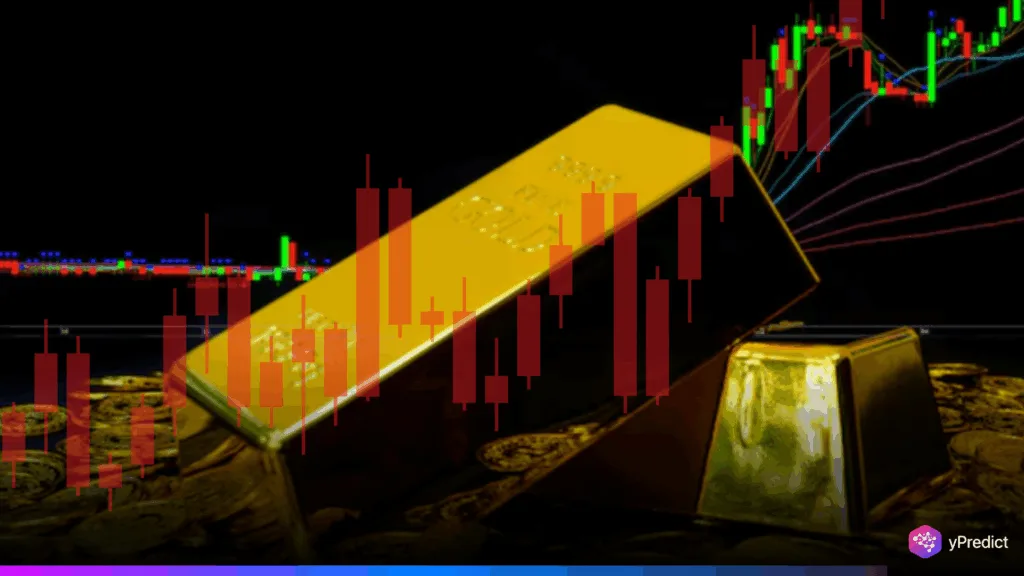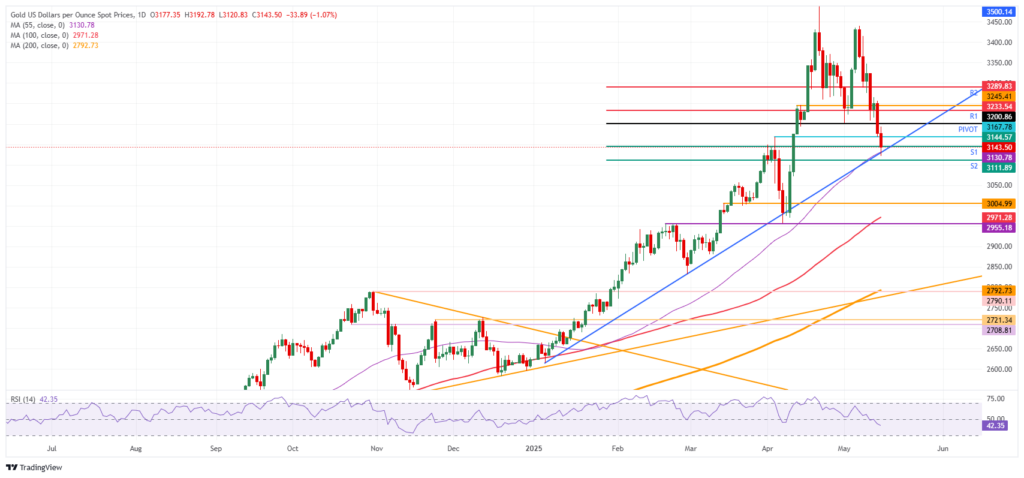
The gold price has declined close to 10% from its record level, leading to lower demand for the metal as a safe-haven asset. The reason for this is increasing optimism that the trade talks will move forward and geopolitical tensions will subside. With technical levels indicating a retest of the key $3,000 mark, investors now closely monitor the market.
Why the Gold Price Is Falling Despite Safe-Haven Demand?
The value of gold (XAU/USD) dropped to around $3,146 during optimistic events in international geopolitics. United States President Donald Trump recently showed optimism about the situation in Syria and Yemen. Additionally, he made hints about potential nuclear negotiations with Iran. These comments implied that tensions would be lessened, which would decrease demand for gold and other safe-haven assets.
Additionally, the appeal of bullion has been further undermined by better US-China relations. China recently relaxed export controls to 28 US businesses. This is lessening the anxieties of a long-term economic war and boosting hopes of trade talks.
US and European diplomats also have their hands full negotiating a conclusion to the Russian-Ukrainian war in Turkey, as well as geopolitical circumstances. But any significant breakthroughs are threatened by President Putin’s absence from these negotiations.
Can Gold Bounce Back from Climbing US Yields?
US Treasury yields are rising, which is further lowering the gold price. Early in May, the 10-year US benchmark yield was 4.11%; it now stands at roughly 4.54%. As yields increase, gold and other non-interest-bearing assets become less attractive. Especially if the Fed indicates that it is willing to keep interest rates high for a long time.
Although Vice Chair Philip Jefferson recently stated that the Fed is prepared to act now to combat inflation. He also expressed doubt that inflationary pressures would soon ease. However, this cautious approach keeps interest rates elevated, making gold even less appealing.
As the market has changed, hedge funds have also been making portfolio adjustments. First Eagle Investments, the manager of a $59 billion global fund, reduced its gold holdings in favor of inexpensive stocks. Despite continuing to be long-term bullish on gold, the fund manager decreased exposure to avoid overconcentration.
Key Support Levels That Could Shape Price Movement
Technically, the price of gold could test key levels of support in the near future. Specifically, the 55-day Simple Moving Average (SMA) level of $3,130 is a key level to watch. A decline towards the psychologically significant $3,000 level could result if the daily close drops below this level.

The March 14 high of $3,004 supports the 100-day SMA, which could be tested by a further decline near $2,971. Resistance, which currently stands in the way of further gains, has moved to $3,167, a high from early April. However, a major catalyst, like an abrupt change in policy or a sudden geopolitical event, would probably be needed to accomplish these goals.
Can Gold Price Rebound Amid Global Uncertainty
The gold price outlook is still cautious as demand for safe-haven assets declines. Rising US yields and Fed policy signals present additional difficulties. Traders will likely closely watch the $3,130 level of support if bearish pressure continues. The short-term trend of gold is shaped by world political and economic events, though it is a precious commodity during times of uncertainty.







